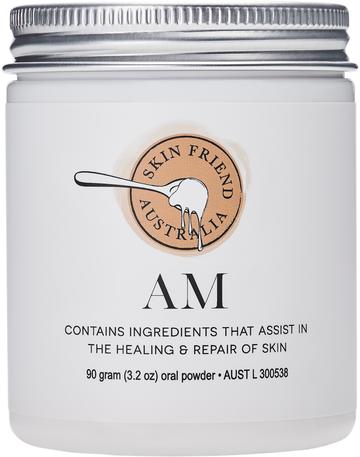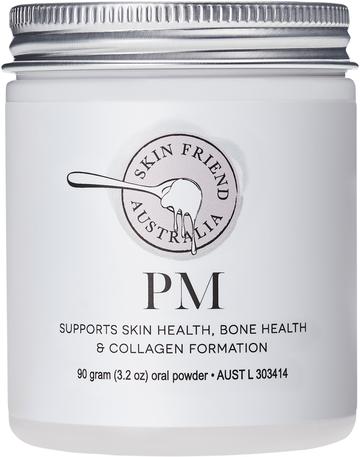Omega-3 is an incredible essential fatty acid (EFA) which is vital for healthy and hydrated skin that is rash-free. Rich sources of omega-3 include flaxseeds/linseeds, salmon, fish oils and chia seeds. In healthy people, omega-3 is converted into active forms that the body can easily use, including eicosapentaenoic acid (EPA) and docosahexaenoic acid (DHA). EPA and DHA help to block inflammation in the body, so ensure you are consuming enough omega-3.
Flaxseed oil research
Scientists De Spirt and colleagues gave two groups of women either flaxseed oil or borage oil for twelve weeks, and a third group received a placebo, which was olive oil. After six weeks of consuming only half a teaspoon of either flaxseed oil or borage oil, skin water loss was decreased by about 10 per cent, and by week twelve the flaxseed oil group showed further protection from water loss and the skin was significantly more hydrated. While the olive oil (placebo) group had no significant change in skin health, at twelve weeks of use the flaxseed oil group had significantly less skin reddening (after irritation), roughness and scaling of the skin.
Note: vegetarian sources of omega-3 are mostly unconverted, with the exception of some types of algae, so this is shown in the first table. The table below shows the foods which have the converted forms — DHA and EPA; these are mostly seafoods that have consumed omega-3 rich algae. Note that EPA and DHA can be consumed in lower doses as they are in a form the body can readily use. This does not mean fish oils are better than flaxseed oil — I have seen many eczema suffers benefit from using flaxseed oil.
Tip: to help the omega-3 in flaxseed oil convert into EPA, consume it with vitamin B6, biotin, magnesium and zinc (refer to Skin Supplement Program table, p. 75).
Notes:
- Omega-3 fish oil supplements thin the blood so discontinue use several weeks before surgery or childbirth.
- If you are following the FID Program, do not consume fish oil, chia seeds or flaxseed meal during weeks 1–2 as these products are tested in weeks 3–4. Alternatively, you can have 1⁄2 teaspoon of flaxseed oil daily as people with chemical sensitivity usually tolerate this low dose.
- If you are not allergic to fish, you can eat it one to three times per week (not more than three times per week).
Omega-3: dosages and food sources
| Omega-3 (also known as) |
Supplement dosages (milligrams per day) |
Eczema-friendly food sources |
|
Alpha linolenic acid (ALA), also known as: Linolenic acid |
Infants (AI) 500 mg from breastmilk or hypoallergenic (dairy- free) infant formula Children + teens 1–3 years: 500–800 mg Adults 1300–2000 mg |
628 g (1 oz) flaxseeds: 6388 mg^* 28 g (1 oz) chia seeds: 4915 mg^* 1 tablespoon flaxseed oil: 7200 mg^* 1 teaspoon flaxseed oil: 2400 mg^* 1 cup soybeans: 700 mg 113 g (4 oz) tofu: 360 mg 1 cup cabbage: 170 mg |
Omega-3: dosages and food sources
| EPA/DHA(also known as) |
Supplement dosages (milligrams per day) |
Eczema-friendly food sources |
|
Eicosapentaenoic acid (EPA) and docosahexaenoic acid (DHA) |
Infants (AI) 20–30 mg from breastmilk or hypoallergenic (dairy-free) infant formula Children + teens 1–4 years: 40–200 mg Adults 160–1000 mg |
100 g (31⁄2 oz) Atlantic salmon: 1090–1830 mg^ 100 g (31⁄2 oz) herring: 1710–1810 mg^ 100 g (31⁄2 oz) sardines: 980–1700 mg^ 100 g (31⁄2 oz) rainbow trout: 840–980 mg^ 100 g (31⁄2 oz) mackerel: 340–1570 mg^ 150 g (5 oz) flathead: 300–400 mg 150 g (5 oz) John Dory: 200–300 mg |
AI: Adequate Intake as per Australian Government guidelines, shown in the table as the lowest dose (there is no set RDI). The higher dose indicates the therapeutic range. Note larger fish such as flake, tuna and perch are rich in mercury so they are not included in this diet (mercury can worsen eczema).
^Contains amines (not suitable during weeks 1–2 of the FID Program).
*Contains salicylates (not suitable for weeks 1–3 of the FID Program).
Getting the omega balance right
Omega-6 is absolutely essential in the diet but too much can worsen eczema as it is used to make arachidonic acid in the body (the stuff that makes inflammation). Omega-6 is often consumed in excess in modern Western diets, with uneven ratios of about 16:1. According to asthma and arthritis research, to suppress inflammation the ideal ratio is between 3:1 and 5:1 (i.e. up to five times more omega-6 than omega-3). The researchers noted that a ratio of 10:1 had adverse effects.
You can balance your essential fatty acid intake by consuming more omega-3 (from flaxseed oil) and less omega-6 from nuts, seeds and cooking oils and by avoiding margarine. The following table shows an example of what a balanced omega-3/omega-6 diet might look like. Keep in mind that avoiding all omega-6 is not the goal, as your body needs some omega-6 to prevent deficiency.
If an adult with eczema were to have a balanced daily intake of omega-6 and omega-3 (with a ratio of approximately 3:1), their diet could include the following:
| Omega-3 |
Omega-6 |
|
(~2.4 g of omega-3) |
(~7.2 g of omega-6) 160–1000 mg |
*If you are allergic or sensitive to rice bran oil, you may use small amounts of sunflower oil or safflower oil — these are salicylate- free oils. Note 1 teaspoon sunflower oil or safflower oil contains 3 g of omega-6, so they have double the amount of omega-6 so consume no more than 1 teaspoon per day or double the amount of omega-3 consumed from flaxseed oil. Note other oils are rich in salicylates and they are not a part of the program.
**As some people are allergic to fish, it was not included in the ratio calculations.
Products
At Eczema Life, we recommend nutritionist Karen Fischer's low food chemical program (The Eczema Detox) along with additive-free supplements for skin health and wellbeing. Click on the images to view more details:




